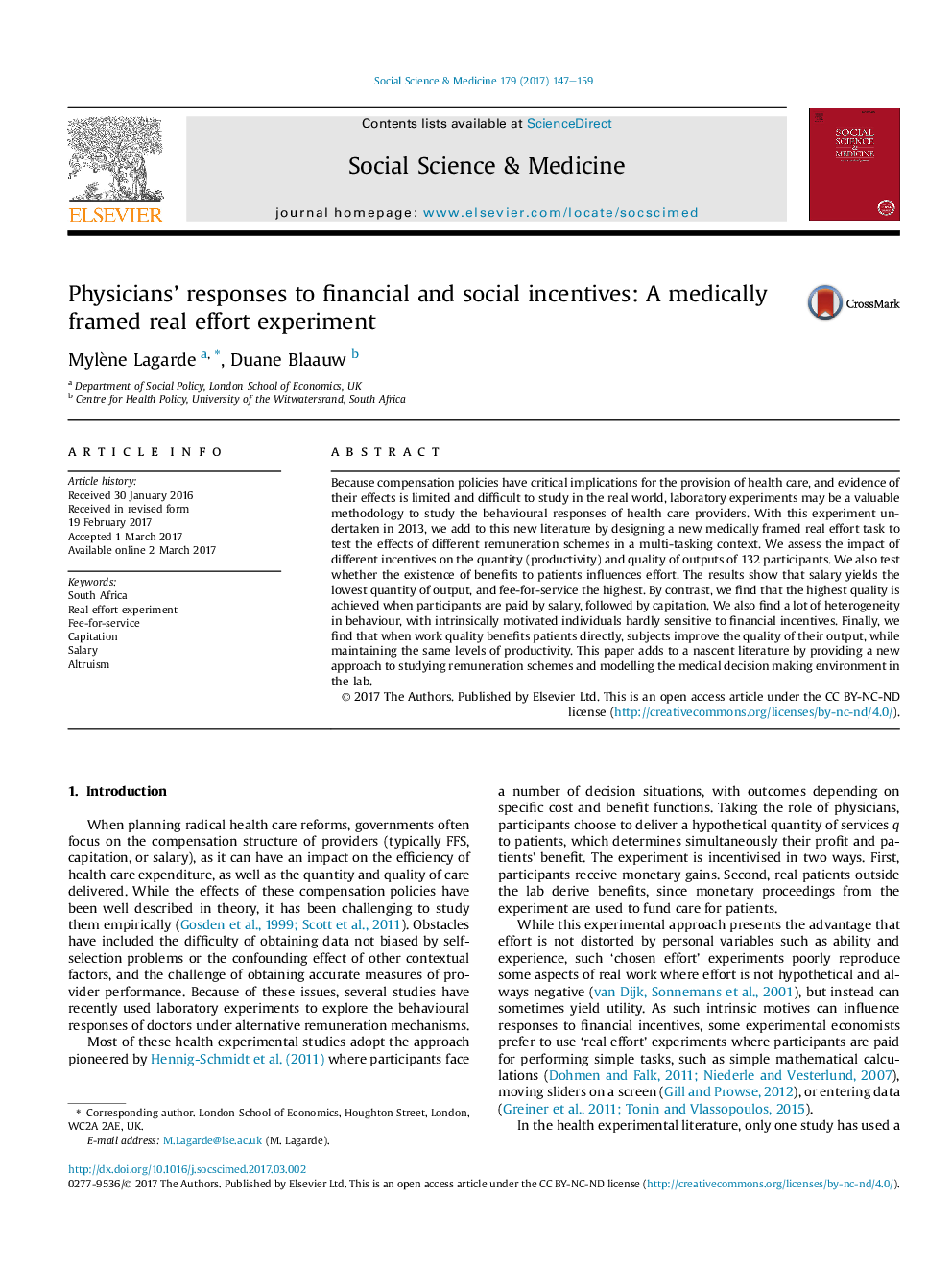| Article ID | Journal | Published Year | Pages | File Type |
|---|---|---|---|---|
| 5046633 | Social Science & Medicine | 2017 | 13 Pages |
â¢We designed a new health economic laboratory experiment.â¢We test the impact of financial incentives on quality and quantity.â¢Fee-for-service leads to the highest productivity.â¢Salary leads to the lowest productivity but highest quality.â¢Social incentives work well for subjects with low intrinsic motivation.
Because compensation policies have critical implications for the provision of health care, and evidence of their effects is limited and difficult to study in the real world, laboratory experiments may be a valuable methodology to study the behavioural responses of health care providers. With this experiment undertaken in 2013, we add to this new literature by designing a new medically framed real effort task to test the effects of different remuneration schemes in a multi-tasking context. We assess the impact of different incentives on the quantity (productivity) and quality of outputs of 132 participants. We also test whether the existence of benefits to patients influences effort. The results show that salary yields the lowest quantity of output, and fee-for-service the highest. By contrast, we find that the highest quality is achieved when participants are paid by salary, followed by capitation. We also find a lot of heterogeneity in behaviour, with intrinsically motivated individuals hardly sensitive to financial incentives. Finally, we find that when work quality benefits patients directly, subjects improve the quality of their output, while maintaining the same levels of productivity. This paper adds to a nascent literature by providing a new approach to studying remuneration schemes and modelling the medical decision making environment in the lab.
